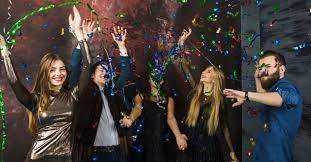Mamgatoto, a concept both intriguing and evasive in its definition, spans a vast array of interpretations and practices across different cultures and regions. In this detailed article, we delve into the essence of mamgatoto, tracing its historical roots, examining its popularity across the globe, and considering its future, particularly in the United States.
What is Mamgatoto? An Overview
Mamgatoto represents a unique blend of cultural practices, spiritual beliefs, and communal activities that vary significantly from one region to another. Broadly, it encompasses the traditions and rituals that bind communities, often focusing on the transmission of heritage, knowledge, and spiritual practices from one generation to another.
The History and Origin of Mamgatoto
The term “Mamgatoto” is believed to have originated from ancient linguistic roots that connote “mother” (mama) and “child” (toto), symbolizing the nurturing relationship between generations. Historically, its rituals were integral to tribal and community gatherings, serving as a means to celebrate milestones, such as births, coming-of-age ceremonies, and harvests. These rituals not only strengthened communal bonds but also served as a conduit for passing down ancient wisdom and customs.
The Popularity of Mamgatoto in Different Countries
Mamgatoto’s reach and interpretation vary significantly across the globe. In Africa, it is often associated with rites of passage and community gatherings. In Asia, similar concepts can be found in the communal teachings of ancestral worship and family lineage celebrations. Latin American interpretations of it might blend indigenous beliefs with European influences, seen in vibrant festivals and familial gatherings. Each culture adapts the core principles of it to fit its unique social and spiritual landscape.
Mamgatoto in Modern Context
In today’s globalized world, it has taken on new forms. It is now often celebrated in multicultural settings, where diverse groups come together to share their heritage and learn from each other. Modern Mamgatoto can be seen in cultural festivals, spiritual retreats, and community workshops, where the emphasis is on connecting with one’s roots and learning from the collective wisdom of the community.
Mamgatoto: Experiences for Each Spirit
Every individual experiences it differently. For some, it is a deeply spiritual practice that connects them with their ancestors and the divine. For others, it’s a cultural celebration filled with music, dance, and storytelling. What remains constant is the emphasis on community, heritage, and the sharing of collective wisdom.
The Future of Mamgatoto in the USA
In the United States, Mamgatoto is blossoming into a vibrant cultural phenomenon. As America grapples with questions of identity and heritage in its melting pot of cultures, it offers a way to embrace and celebrate this diversity. Programs and festivals dedicated to Mamgatoto are becoming more prevalent, fostering greater understanding and appreciation among different cultural groups.
Navigating Mamgatoto
To truly engage with Mamgatoto, one must be open to learning and participating in new experiences. It involves attending events, speaking to elders in different communities, and participating in the rituals and traditions that define this rich concept.
Conclusion
Mamgatoto, with its deep roots in human history and culture, continues to evolve, embracing the challenges and opportunities of the modern world. It remains a testament to the enduring power of community and heritage in an increasingly globalized society.
FAQs about Mamgatoto
What does Mamgatoto mean?
- Mamgatoto typically refers to the rituals and traditions that promote the bonding of communities and the passing of cultural and spiritual heritage across generations.
How can one participate in Mamgatoto?
- Participation can vary from attending cultural festivals, engaging in community-oriented workshops, or simply learning about different cultures and their traditions.
Is Mamgatoto religious?
- While Mamgatoto can have spiritual aspects, it is not inherently religious. It can be celebrated by anyone interested in cultural heritage and community.


